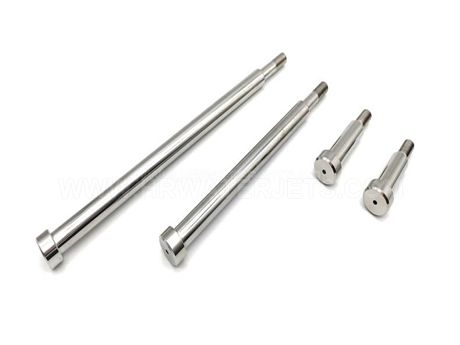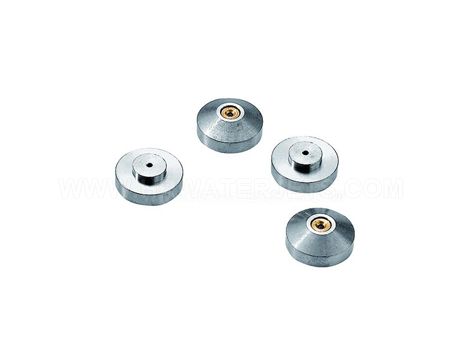How Long Do Waterjet Nozzles Last?
Water jet cutting is a process in which a stream of water cuts material at a ridiculous speed (created by placing the water under high pressure and forcing it through a small orifice) by eroding the material at the point of contact.
Small Batch Sheet Metal Stamping is a process in which a stream of water cuts material at a ridiculous speed (created by placing the water under high pressure and forcing it through a small orifice) by eroding the material at the point of contact. By adding abrasive compounds to the jet stream, cutting efficiency can often be improved. This is often used with harder materials such as metals and stones and is often referred to as abrasive cutting.
A typical waterjet cutting machine will operate between 300 MPa (40,000 psi) - 400 MPa (60,000 psi). At 300 MPa, the water jet can leave the nozzle at Mach 2 (680 m/s) and at 400 MPa it can exit at speeds in excess of Mac 3 (1,021 m/s). At these speeds, the water has a lot of focused energy, allowing it to cut a wide range of materials, and when you add abrasive compounds to the jet stream, the wear rate increases tenfold, allowing you to cut thick, hard materials without losing accuracy.
A common waterjet machine will cut in 2 dimensions (X and Y) to create flat patterned parts. DXF file format job requests are often accepted by waterjet shops as they are 2D files and can be easily converted to the machine path of a waterjet cutting machine.

Water Jet Nozzle
Pure water and abrasive cutting
Pure water cutting is mainly used for cutting soft materials such as rubber, foam, gaskets, leather, textiles and food related items. For hard materials that cannot be processed with water alone, the waterjet nozzle is usually replaced with an abrasive cutting nozzle, which includes a mixing tube. The high speed water jet creates a vacuum which draws the abrasive into the mixing chamber, producing an extremely powerful abrasive jet. The process is ideal for cutting intricate patterns in sheet metal, composites, stone, synthetic ceramics, glass, etc.
The cutting speed varies depending on the material being cut, its thickness and the desired edge quality, but typically the cutting speed can be approximated in the table below, where the cutting speed is measured per minute.

Water Jet Cutting Nozzles
Materials
Generally speaking, almost any material can be cut by the waterjet, ultimately from foam to tool grade steel, which is why the process is so versatile and why it is used in almost every industry. The limitations often fall into the material thickness category, as certain materials have specific properties that need to be considered before cutting. Below is an overview of some of the materials and their limiting factors.
Nozzles
As you might guess, the process causes significant wear to the nozzle, but developments in materials science and manufacturing have made it possible to mix chambers (usually some form of tungsten carbide) and orifices (usually some form of diamond or ruby) for the nozzle. However, this does not completely eliminate nozzle wear and over time it will begin to reduce the accuracy of the jet. The wear rate depends on many factors, but it is common to replace the orifice after 20-40 hours of use and the nozzle after 40-80 hours of use.